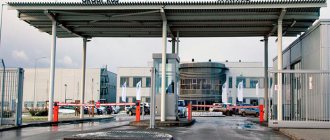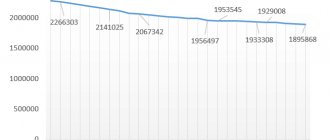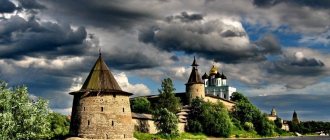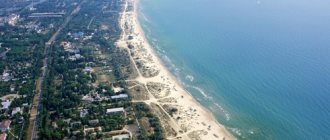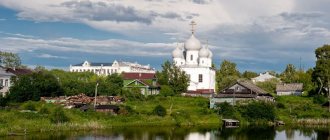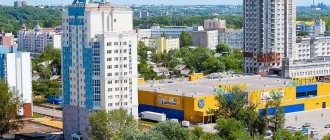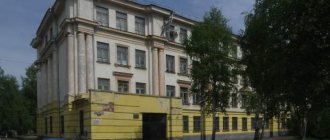The Leningrad region is located in the north-west of the Russian Federation. The terrain is represented by plains and lowlands, a significant part of which is swampy. If you carefully examine the map of the Leningrad region from a satellite, you will notice that it borders on several constituent entities of the Russian Federation, namely the regions:
- Novgorodskaya;
- Vologda;
- Pskovskaya.
In the north, the borders of the region are limited by Karelia. Also, the Leningrad region has common borders with Estonia and Finland.
The regional government is located in the city of St. Petersburg; it can be viewed on a map of the Leningrad region by district. What is atypical for our country is that it is not part of the region, but is a semi-enclave territory.
Most of the hydrographic objects in the region appeared thanks to the Baltic Sea basin. Therefore, in the north-west of the region there is a huge number of rivers and lakes. The largest rivers that can be found on the map of the Leningrad region with diagrams include:
- Pasha;
- Oyat;
- Meadows;
- Volkhov;
- •Syasya.
If you add up the lengths of all the rivers in the region, you get more than 50 thousand km. One of the most significant hydrographic objects is also Lake Ladoga - the largest in area in Europe and one of the deepest in the country.
If you zoom in on the map, you can take a closer look at the districts on the map of the Leningrad region, the cities that are part of them, as well as the streets and houses.
Economic indicators of the region
Living wage in the Leningrad region
The cost of living in the Leningrad region in 2016 is:
- — per capita only 8,722 rubles/month;
- — for part of the working-age population only 9255 rubles/month;
- — for pensioners – 7601 rubles/month;
- — for children – 8534 rubles/month.
GRP structure in 2015
Domestic regional product (GRP) is 714.0 billion rubles. (as of 2014)
Table of percentages of the contribution of various industries to the regional economy of the Leningrad region:
| Sectors of the economy of the Leningrad region | Interest |
| Industry | 39,1% |
| Agriculture | 30,6% |
| Construction | 6,7% |
| Trade | 17% |
| Other activities | 30,6% |
Pie chart of GRP in 2015
Quote from the speech of the Governor of the Leningrad Region Alexander Drozdenko:
“One of the priorities of the economic policy of the Leningrad region is the creation of comfortable conditions for attracting investment and developing the investment process.
Creation of favorable attraction of significant Russian and foreign investments in the development of the regional economy. Enterprises of the world's leading companies operate in the Leningrad region - Caterpillar, Ford, Nokian Tires, International Paper, Kraft Foods International, and several others.
The Leningrad region has won an innovative approach to business development that guarantees investors; we welcome new ideas and are pleased to expand the circle of both domestic and foreign partners.”
Message source
Population and national composition of the Leningrad region
The most populous are the municipal districts geographically adjacent to the center - the city of St. Petersburg. The least populated areas are in the eastern part of the Leningrad region.
The population of the Leningrad region has been increasing in recent years due to migration.
Main indicators characterizing the population and national composition of the Leningrad region:
Population - 1,779,422 people.
Population density - 21.21 people/km2
Urban population - 64.43%
According to the State Statistics Committee of Russia for 2016.
The overwhelming majority of residents of the region are Russians; Ukrainians, Belarusians and other nationalities are less represented.
In recent years, the number of large ethnic groups has increased in the Leningrad region, mainly emigrants from the CIS countries: Armenians, Azerbaijanis, Uzbeks, Tajiks, Moldovans.
General information about the Leningrad region
Distinctive features
. The Leningrad region is part of the Northwestern Federal District. Although instead of the city of Leningrad, St. Petersburg again strengthened in our minds, as in the good old days of the Russian Empire, officials did not change the name of the region. Most of the region's territory used to be part of the St. Petersburg province. The proximity of the capital left its mark on the economy and culture of these places. First of all, this is the abundance of architectural masterpieces that flood the surroundings of the northern capital. The palaces of emperors, empresses and representatives of the flower of the Russian nobility today have become museums attracting tourists to Lomonosov, Gatchina and other towns near St. Petersburg.
Gatchina is especially beautiful in summer
Geographical location
. When Tsar Peter I decided to found St. Petersburg, it seems that he did not care at all whether the local climate would be to the liking of the residents of the new capital of Russia. 60 degrees north latitude is no joke, and severe frosts are not uncommon here in winter, with temperatures easily reaching 25 degrees below zero. Despite the abundance of swamps, the nature here is very beautiful. There are 1,800 lakes in the Leningrad region, including Ladoga, the largest in Europe. The northern part of the region is washed by the waters of the Gulf of Finland, providing access to the Baltic Sea, and from there to the Atlantic.
Sukhodolskoye Lake
Population.
Despite its proximity to such a great city as St. Petersburg, the Leningrad Region is inferior in population to dozens of other regions of Russia. As of 2013, the population of the Leningrad region was 1.71 million people, which is explained by its northern location and harsh climate.
In terms of gender structure, there is practically no difference with the Moscow region (46.3% are men, 53.7% are women). In terms of population density, the region is in the very middle of the ranking (20.87 people per sq. km.) In terms of national composition, almost 93% of the region’s population are Russians. The largest age group is pensioners (22%), the smallest is children and teenagers (14.3%).
Crime
. In terms of crime level, the Leningrad region is in favorable 60th place in the ranking. The number of registered crimes per year is only 15 per 1000 people. Moreover, thanks to the excellent work of law enforcement agencies, there is a steady downward trend in the number of crimes.
Unemployment rate
in the Leningrad region is much higher than, for example, in Moscow or the Moscow region - 3.24%. But fortunately, this figure is decreasing every year. This is especially noticeable compared to 2000, when it was as much as 9.63%. However, in the ranking of regions by unemployment rate, the region firmly ranks 4th, which cannot please those who decide to live and work there. In terms of wages, the Leningrad region is second only to Moscow, St. Petersburg and the Moscow region. The average salary here fluctuates around 26,000 rubles.
Vsevolzhsk. Panorama. Photo by Rusbat-27
Property value
in the Leningrad region depends on the city, the quality of housing and the year of construction. The most expensive are new buildings in the suburbs of St. Petersburg. Due to their proximity to the center and good environmental situation, such objects are very attractive. Apartments in such new buildings can reach 10 million rubles for a three-room apartment. Inexpensive, budget housing costs from 1 million rubles.
Climate
Leningrad region - harsh, oh harsh. This is one of the main reasons why people do not want to move here. In summer it’s +17°C, in winter –10°C. The average annual precipitation is 600-700 mm. Summer and autumn are very rainy, so if you have a sunbathing day, try to make the most of it, otherwise you will have to wait until next year.
Population distribution
Today, the main population of the districts of the Leningrad region lives in cities. According to statistics, the urban population is 1,142,400 people, and the rural population is 636,500 people. At the same time, most of the residents settle closer to St. Petersburg, where they can find higher-paying jobs. The region's settlements, by Russian standards, are generally small in size. In the Leningrad region there are only 31 cities with a population of more than 10 thousand people, and there is not a single one where more than 100 thousand inhabitants are registered.
Economy and industry of the Leningrad region
The region's economy is represented by many industries. Hunting, fishing and forestry have always been and remain traditional for the region. The leading positions are occupied by such sectors of the economic sphere as:
- transport and communications;
- manufacturing;
- construction;
- energy.
A large number of enterprises in the light, food and processing industries operate in the region. Here they sew shoes, clothes, and produce plastic and metal products.
A great contribution to the region’s economy comes from investors who see great opportunities in the region for developing large businesses and opening large-scale investment projects.
Total population
The history of observations of the number of inhabitants in Russia begins during the Tatar-Mongol invasion. However, separate information on various subjects, including the Leningrad region, appeared only in Soviet times. Due to the fact that the region changed its borders several times during the years of Soviet power, there is no definitively reliable figure on the number of residents. Today, the total population of the Leningrad region is 1,778,890 people (according to statistics for 2016).
Content
- 1 Medium-sized cities 20-100 thousand people 1.1 Gatchina
- 1.2 Vyborg
- 1.3 Vsevolozhsk
- 1.4 Sosnovy Bor
- 1.5 Tikhvin
- 1.6 Kirishi
- 1.7 Sertolovo
- 1.8 Kingisepp
- 1.9 Volkhov
- 1.10 Tosno
- 1.11 Meadows
- 1.12 Shales
- 1.13 Kirovsk
- 1.14 Otradnoe
- 1.15 Communard
- 1.16 Nikolskoye
- 1.17 Pikalevo
- 2.1 Lodeynoye Pole
Cities of the Leningrad region
Gatchina -
located 8 km south of St. Petersburg, this city is famous for its palace and park complex, included in the UNESCO World Heritage List. This is the most populated city in the Leningrad region; in 2010 the population was 92,937 people. Pros: large industrial center, good infrastructure. The disadvantage is constant problems with roads and transport.
Vyborg -
a truly unique city for Russia, which has preserved its medieval appearance. The main attraction is Vyborg Castle, founded by the Swedes in 1293.
Historical center of Vyborg
But this is not only a city of historical monuments, but also a large industrial center and port. Pros: Only 27 km to the border with Finland, so the Eurozone is within easy reach, given the ease of obtaining a Finnish visa. Cons: crime and unsatisfactory state of housing and communal services.
Pinery -
this city of nuclear scientists with a population of 67 thousand people. located on the shores of the Gulf of Finland, west of St. Petersburg. There is very beautiful nature and developed infrastructure here. Minus: the presence of the Leningrad Nuclear Power Plant, although the radioactive background is normal.
Leningrad Nuclear Power Plant. Photo by Alexey Kuklin
Vsevolozhsk —
located just 24 km from St. Petersburg. If in 1920 almost half of the population of these places were Finns, now their share has dropped to less than 1%. The city is growing rapidly, and its population has reached 60 thousand people. Here, unemployment is the lowest in the region, and this is not surprising, because in addition to this, large factories of other companies are located here - Severstal, Nokian, Merloni, etc. The city has excellent infrastructure and is one of the locomotives of the region's economy. Disadvantages: ecology. Despite the abundance of lakes, all of them are considered unsuitable for swimming.
Ethnic composition
The population of the Leningrad region begins to be analyzed on the basis of “nationality” only in 1959. At this time, the region was already completely Russified; the times of great ethnic diversity were a thing of the past. On average, during Soviet times, about 90% of the region's population was Russian. In the 2000s, this figure decreased slightly - to 86%, apparently due to people from Central Asia who came to work. In second place in terms of numbers are Ukrainians - 1.8%, in third place are Belarusians (around 1%), followed by small groups of various ethnic groups: Tatars, Armenians, Uzbeks, Azerbaijanis, Finns, etc.
Transport links, roads and routes
The Leningrad region has a well-developed network of roads and railways. The following highways of federal and republican significance pass through the region:
- M10 "Russia";
- P21 "Cola";
- R23 "Pskov".
Three border automobile checkpoints: “Trofyanovka”, “Scandinavia” and “Brusnichnoe”. There is a Narva checkpoint on the Estonian border. 4 cargo seaports were built on the Baltic coast of the region:
- Ust-Luga;
- Vyborg;
- Vysotsk;
- Primorsk
In addition to maritime shipping in the region, there is also river transport of goods and people along rivers and lakes. There is an international airport in Pulkovo.
Medium-sized cities 20-100 thousand people
Gatchina
Population 95,623 people (2016).
Vyborg
Population 79,350 people (2016).
Vsevolozhsk
Population 67,911 people (2016).
Pinery
Population 67,602 people (2016). The city is home to the Leningrad Nuclear Power Plant, launched in 1973.
Tikhvin
Population 57,970 people (2016).
Kirishi
Population 52,338 people (2016).
Sertolovo
Population 51,090 people (2016).
Kingisepp
Population 47,705 people (2016).
Volkhov
Population 45,585 people (2016).
Tosno
Population 38,289 people (2016).
Meadows
Population 36,148 people (2016).
Slates
Population 33,037 people (2016).
Kirovsk
Population 25,691 people (2016).
Otradnoe
Population 25,203 people (2016).
The Leningrad Shipbuilding Plant is located in the city on the banks of the Neva.
Kommunard
Population 21,743 people (2016).
Nikolskoye
Population 21,343 people (2016).
Pikalevo
Population 20,498 people (2016).

